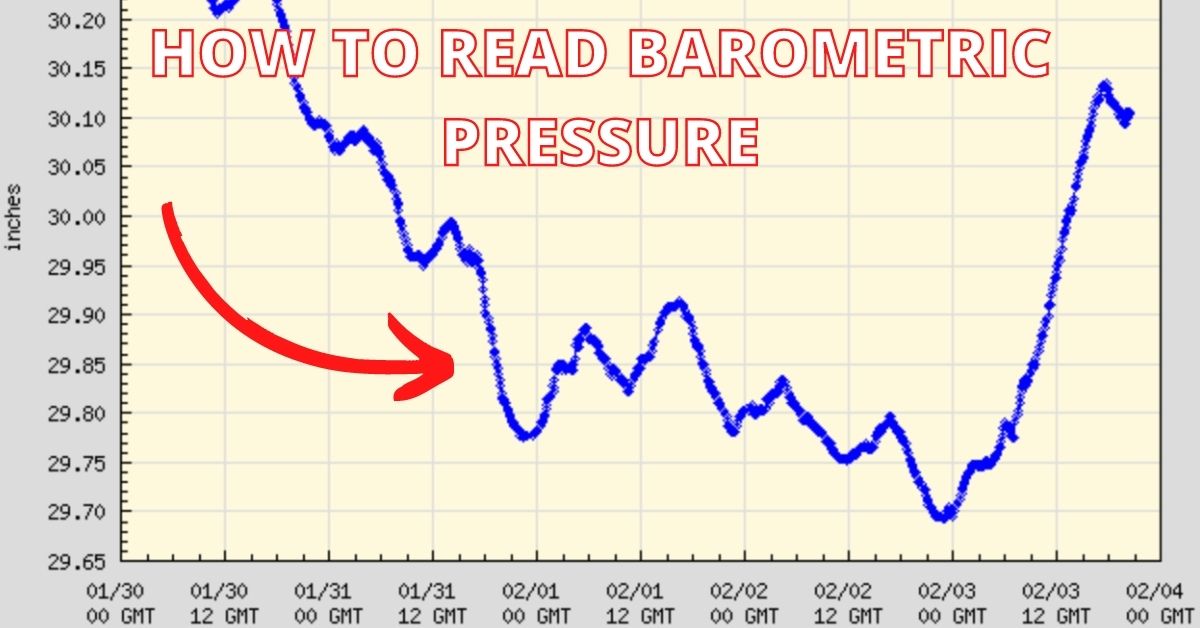Everything You Need To Know About Barometric Pressure
- By: Wyatt Parcel
- on

What does barometric pressure have to do with inshore saltwater fishing?
How should you factor in barometric pressure when you plan a fishing trip?
Barometric pressure is the measurement of air pressure in the atmosphere.
Learn how this impacts fish patterns below!!
How To Read Barometric Pressure
Barometric pressure’s effect on inshore fishing is much simpler than you might expect.
In plain terms, it is determining where you are in different frontal passages that are keyed into you by barometric pressure and which game plan to accordingly use to fish.
This means your pre-frontal game plan, frontal game plan, and post-frontal game plan.
Reading A Barometer
A falling barometer indicates a break between two air masses that are coming through.
This means there are two different weather systems coming that may or may not be hot or cold.
Low-pressure readings indicate to you the pressure is about to change where you are as a result.
At these types of barometric readings, you want to implement the pre-frontal fishing game plan.
The air mass is moving through your area and basically changing the weather along with it.
Fish will sense and react to the weather changes and that can trigger a really good bite.
The fish will swim up into the shallows and feed heavily on bait.
Typically in the winter, a low-pressure system indicates harsher weather to come which is why fish will feed more intensely prior to big pressure changes.
After the initial weather changes, the temperature will stabilize and the barometric readings will level out.
During the winter, fish will move out of the shallows at this time in search of deeper pockets of water where they will wait for the high-pressure system to change the weather again.
When the barometer is level, the harsher and colder weather will come through your area.
Once the barometer begins to creep up, this means the high-pressure system will sweep your area next.
The temperatures begin to slowly rise and fish will make their way back into the shallows.
This cycle will continue to repeat itself with peaks and valleys that are strong indicators of sparking a good bite.
Barometric readings will vary from region to region but this simple overview is a starting point where you can further pre-plan your fishing trips to ensure you get yourself on fish.
There is not much concern for specific numbers on the barometer, rather, the flow and movement of the chart’s readings in relation to low and high-pressure systems is what you are looking for.
How To Read Barometric Pressure [VIDEO]


Conclusion

Barometric pressure is an excellent way to accurately pre-plan a trip around fronts and weather conditions to better predict where the fish may be especially during the wintertime.
Fish are ultra-sensitive to the conditions and pressure around them and will respond to the flow of barometric pressure as it rises and falls.
Be sure to focus on the peaks and valleys that indicate strong bites rather than focusing on the numbers on the chart!
Do you have any more questions on barometric pressure?
Let me know down in the comments!
And if you know someone who wants to learn more about barometric pressure, please TAG or SHARE this with them!
P.S. – Want to make explosive, perfect, and masterful casts with your spinning rod, to reach the trophy fish that have no idea you are there… to cast like the pros, all while using less effort than ever before? Check out Casting Mastery.
Related Articles:
Related categories:
STOP WASTING TIME ON THE WATER!
Do what the “SMART ANGLERS” are doing and join the Insider Club.
Here’s what you’ll receive today when you join:
- Weekly fishing reports and TRENDS revealing exactly where you should fish every trip
- Weekly “spot dissection” videos that walk you through all the best spots in your area
- Exclusive fishing tips from the PROS you can’t find anywhere else
- Everything you need to start catching fish more consistently (regardless if you fish out of a boat, kayak, or land).










As I read this, the fish move inshore to shallows to feed as the pressure is falling. they then move back deeper as the pressure stabilizes. I cant see any reference as to what they do as the pressure rises as shown in the far right of your graph or what they do when the higher pressure stabilizes. When they are deep due to the leveled out lower pressure, are the fish more active just deeper or are they conserving energy (lethargic) until the pressure changes up or until it cycles downward yet again?
When pressure is rising, that usually means either harsh warmth (common in summer) or harsh cold (common in winter). This usually means they go deep in both scenarios to wait out more mild weather and conserve energy, and get lethargic as you stated above. Not nessecarily more active, but that’s more likely where you’ll be able to get a bite.
This is great information Wyatt! I think If more people understood this one thing it would help them so much in the winter.
Absolutely! Tough to pick days in the winter, and pressure definitley helps.
Here’s a website that shows the pressure as well as tidal information, etc. Just pick your state and the area you want to fish.
https://tides4fishing.com/us
Good find Mark!
Good Stuff Bro, this website is amazing!
I like the chart you have in this video. Could it be possible to have this in the Community section based on the tide chart that we choose?
Let me get with Nick to see if we can get it added! Till then, you can just pull up the NOAA chart from the tide station (which is exactly what I used in this video for the area I was fishing that day)
I can’t find it within Salt Strong’s web site.